From Manila Party Boy to Hispanic-Hollywood Heartthrob
Juan Garchitorena’s life spanned two careers of note on three continents and three countries. Born on March 24, 1898 in Manila, just 40 days before the Americans seized the colony from Spain, young Juan began a brief early career as a pro futbol player in Spain. Later, in midlife, he had an onscreen Hollywood career.

Juan (Garchi)Torena (public domain)
The Garchitorenas, originally from Navarre, Spain, were a prosperous merchant family in Spanish colonial Manila. Jose Garchitorena, Sr. and his brothers established and operated a carriage-making business (think early Hérmes of Manila), a paint factory (“Iris”) and “La Fe” coconut oil and soap factory from the late 1860s. In 1898, matriarch Fe (nee Carvajal) gave birth to Juan, her third son, but very shortly after, she died of complications from that childbirth.
For Jose Garchitorena, Sr., both the end of Spanish rule and the loss of his beloved wife, proved too much. Like scores of many other Fil-Hispanic families after the start of American rule, Jose, Sr., joined the reverse exodus back to Spain, made easier by the opening of the Suez Canal. These were the Fil-Hispanic families who chose to maintain their allegiance to Spain rather than to the new Anglo-colonizers. By 1901, Jose, Sr., was on his way to Spain with his three boys. Juan, the youngest, was three years old when they resettled in Barcelona, and thus grew up in an entirely Spanish-speaking milieu.
New Start in Barcelona
As the Garchitorenas in Manila were related to the Carvajals and the Alcantaras, Juan’s early life more or less intersected with that of football legend Paulino Alcantara (whom I had written about: Bend it Like Paulino . . . and Friends — Positively Filipino | Online Magazine for Filipinos in the Diaspora,)
In the intervening years, while the brothers were growing up, football played an important role in their lives. While Jose, Sr., managed to secure a directorship in the new pro football Futbol Club Barcelona (FCB), and his sons were early recruits (as was Paulino Alcantara), it was not without controversy—and not because of nepotism.
An FCB victory in a 1916-17 championship game against rival Madrid was nullified due to new rules stating that non-Spanish-born players were disqualified from the League. When they had first arrived in Spain in 1901, Jose, Sr., registered his family as having been from Argentina, instead the Philippines, which was a Spanish territory.
The Garchitorena brothers played with FCB until 1919 when Juan quit the sport. He was more interested in partying and socializing. So, around 1921, Juan and older brother, Angel, returned to Manila (by which time, their cousin, Paulino had also returned to Spain.)
Little is known about Juan’s adult years in 1920s Manila, other than he developed a reputation as an avid party boy. Although Castilian was his mother tongue, Juan picked up English under the American Commonwealth late in life. As an adult learner, he spoke with a heavy Spanish accent, which became part of his charm and helped him find his way in Los Angeles, sometime in the late 1920s.
Hollywood or Bust
The young ex-Manilan/ex-Barcelonian arrived at a providential time in Hollywood. He managed to make the right party rounds, meeting the likes of Douglas Fairbanks, Sr., and Mary Pickford. As two of the founders of a new film company, United Artists, Fairbanks and Pickford were well placed to spot possible film star material. Their new studio was readying the new sub-stratum “B”-class, Latino-film production line on the side, and they encouraged Juan to try out for the new “talkies” and become part of the stable of dark-haired actors playing the archetypal “Latin lover/gigolo”—Rudolph Valentino, Ramon Navarro, Don Ameche, etc.
Thus, by 1930, the former Juan Garchitorena was on his way to a new, glamorous Hollywood film career. as “Juan Torena,” debuting in Sombras de Gloria, the first non-English-language feature film shot and financed by a legitimate Anglo Hollywood studio.
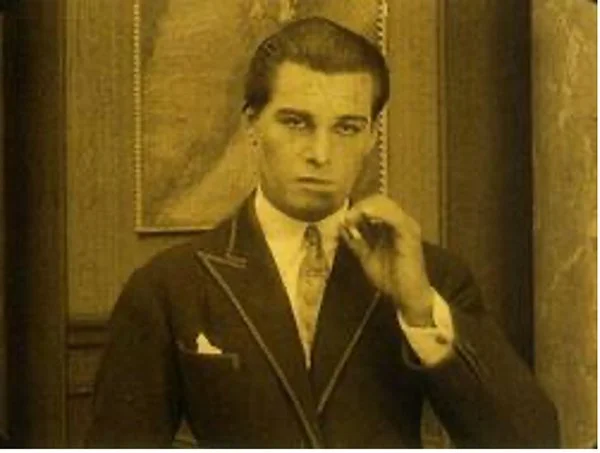
Juan, when he was starting out in Hollywood, early 1930s. (c/o Jose Bernabe Tronchoni
The Strange HHH-Hispanic-Hollywood-Hybrid Film
Juan’s career coincided with a little-known “parallel” Hollywood Spanish-language talkies assembly-line of those early days. Even though the talkies had arrived, Hollywood had not yet perfected its dubbing/foreign language of its main product, English-language films Like today, there was a rather significant and hungry domestic Spanish-speaking market in California, Texas, Arizona, which Anglo Hollywood did not want to cede to Latin rival studios and distribution chains. Anglo Hollywood shot mainstream English films with the A-List Anglo actors and crews at daytime, and then filmed the same story’s same scenes on a “lower-budget,” cut-rate scale with local Latin talents (mostly Mexican-American) and imported other rising names from Mexico, Argentina, Venezuela, Cuba (supposedly the most quarrelsome of the Latin artists), Spain, an occasional Brazilian (Carmen Miranda), and even a Filipino from the US colony—Juan Torena. Viewed from today’s lens this had extremely discriminatory overtones. So was born the little-known and forgotten 3-H films—the Hispanic-Hollywood Hybrid films, where Juan Torena found his niche.
As today, the “imports” were glad to be paid in dollars, even though not on the same scale as their Anglo counterparts. The studios were able to get away with the disparity since the actors’ union, SAG (the Screen Actors Guild), was not available to the “guest workers” then and wasn’t as powerful as it is today. But at least as in Juan’s case when he appeared in both a main-daytime-Anglo product and its after-dark-Latin copy, one hoped they got paid twice.
Here are some of the Hollywood “Spanish-language” projects Juan appeared in:

There is one film viewable on YouTube with Juan in third billing as Claudio -- Verbena Tragica (English title Block Party).
Verbena trágica (1938), Película completa en español - YouTube
Verbena Tragica was one of the last alternate HHH films. By 1938, when Hollywood stopped making them, the nine studios at the time had produced some 130 features, and Juan could lay claim to have been a small part of that now-forgotten chapter in Hollywood history.
In 1947, things got leaner for Juan as he made only two films, and none for 1948 and 1949. But in 1950, the film An American Guerilla in the Philippines brought Juan back to the land of his birth

American Guerilla was considered a “fluff” Grade-B film in Hollywood circles, even though it starred Tyrone Power. It was directed by Fritz Lang (famed German director of Metropolis from the silent film era) who was quoted as saying that he “only accepted the not very desirable film assignment because (he) had bills to pay.”
American Guerilla, however, was the first full-length Hollywood production shot in the Philippines in Technicolor. American studios were shooting more films on location in Europe at the same period.
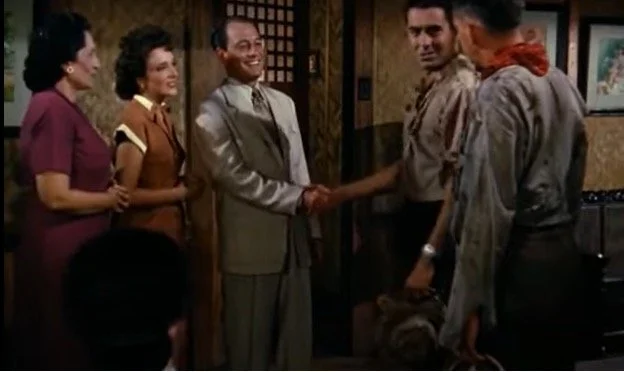
A screen-grab from An American Guerilla in the Philippines, (L-to-R) Micheline Prelle (2nd from left), Juan Torena shaking hands with Tyrone Power. (20th Century-Fox, 1950)
The Filipino film industry at the time was relatively primitive compared with Hollywood, so it could lend very little in terms of technical assistance; 20th Century-Fox sought the assistance of the US Navy in the Philippines (and also completed its contract obligations to Power and French actress Micheline Prelle). It was filmed in Subic Bay, with the nearby locations of Bataan and Zambales filling in for the real-life locations in Leyte and Mindanao.
American Guerilla was based on a novel by Ira Wolfert on his actual war-time experiences in the country. In it, Torena plays the local mestizo haciendero, Juan Martinez, and Prelle plays his French trophy wife. The film doesn’t explain how Martinez got to marry a European woman. Juan’s character, the only time he played a Filipino in his career, is aiding the local underground and ends up meeting a brutal death in the hands of the Japanese. His character is conveniently dispatched after an hour to make way for the eventual romance between his French widow Jeanne and the American hero (Power).
American Guerrilla in the Philippines (1950) Good Quality - Tyrone Power - YouTube
After American Guerilla, Torena did just two more US films. His last film credit, Jeopardy (not the game show), was in 1953, when he was only 56 years old. He apparently only gained his US citizenship a year later. After that, he fell off the grid completely.
In 1957, nearly 60 years old, Torena married Natalie Moorhead, like him an actor who played supporting roles.
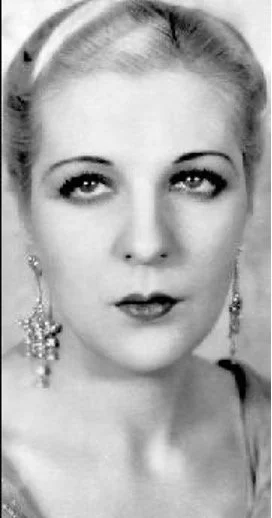
Natalie Moorhead
It was a first marriage for Torena and the fourth (and last) for Moorhead. They retired to Santa Barbara and dabbled in real estate in the emerging, genteel suburb of Montecito. For Hollywood professionals who wanted a second home away from the glare of Beverly Hills and Bel-Air, Montecito was a more secluded refuge than, say, Palm Springs, whose desert setting was more a winter getaway. Montecito’s more famous residents today are the likes of Oprah Winfrey and Mr. and Mrs. Harry Windsor.
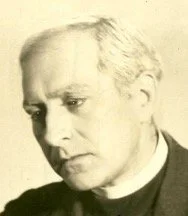
One of the last known photos of Juan, c. 1970s. (c/o Jose Bernabe Tronchoni)
Juan passed away quietly on June 27, 1983 at 85. He rests in Calvary Cemetery, Santa Barbara, California.
A search for “Juan Torena” on the internet, more often than not, yields the Cuban athlete Alberto Juantorena instead of the lone Filipino entry in the “Hollywood Heartthrob” derby-- Juan (Garchi)Torena, 1898-1983.
SOURCES:
Paquito de la Cruz, Eduardo Rocha
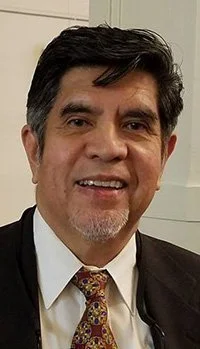
Myles A. Garcia is a Correspondent and regular contributor to www.positivelyfilipino.com. He has written three books:
· Secrets of the Olympic Ceremonies (latest edition, 2021);
· Thirty Years Later . . . Catching Up with the Marcos-Era Crimes (© 2016); and
· Of Adobo, Apple Pie, and Schnitzel With Noodles (© 2018)—all available in paperback from amazon.com (Australia, USA, Canada, UK and Europe).
Myles is also a member of the International Society of Olympic Historians, contributing to the ISOH Journal, and pursuing dramatic writing lately. For any enquiries: razor323@gmail.com
More articles from Myles A. Garcia







No comments:
Post a Comment